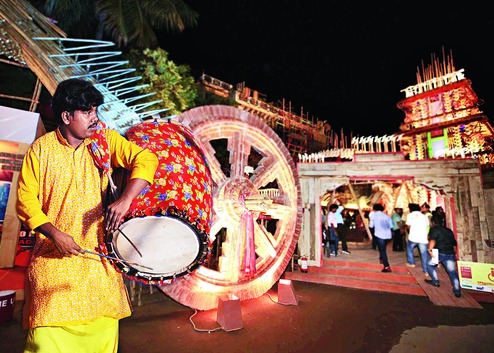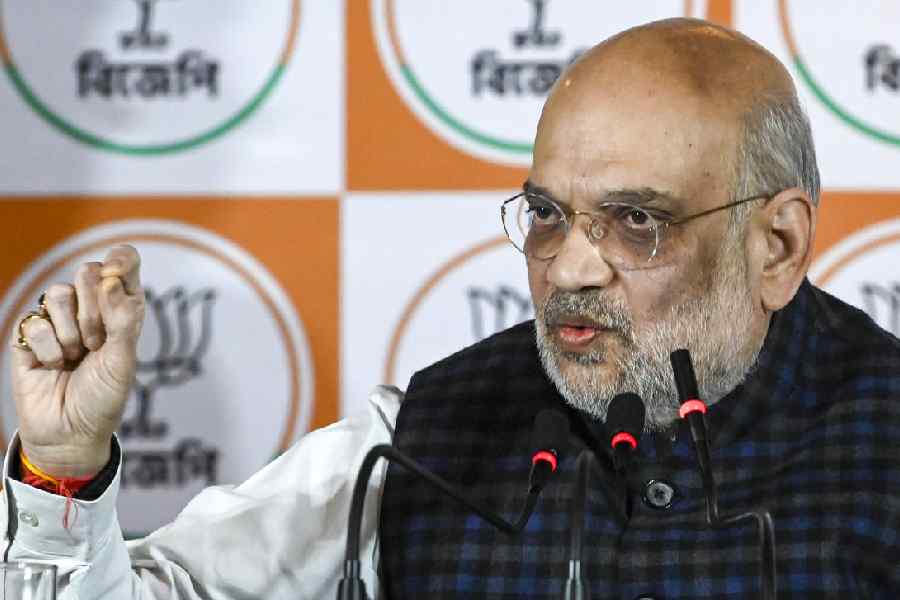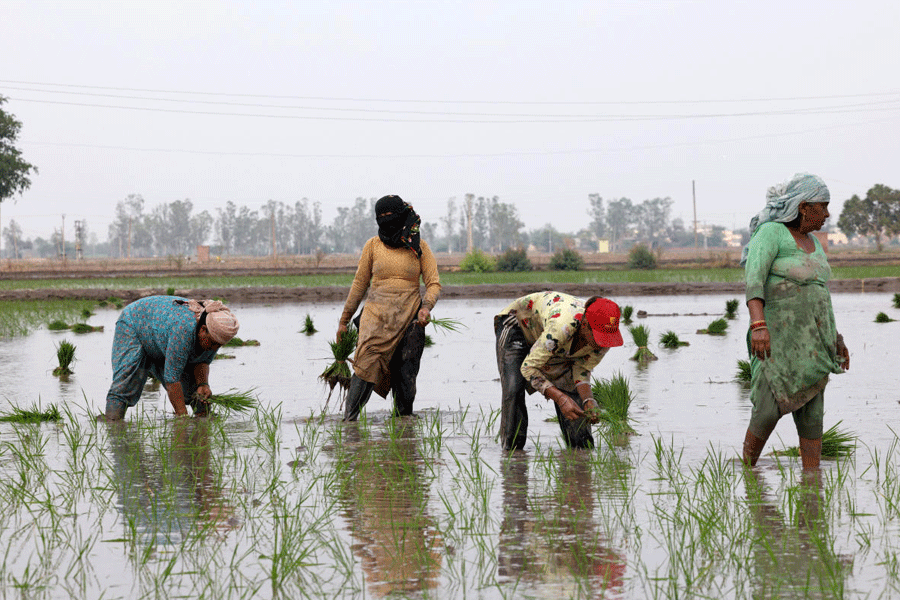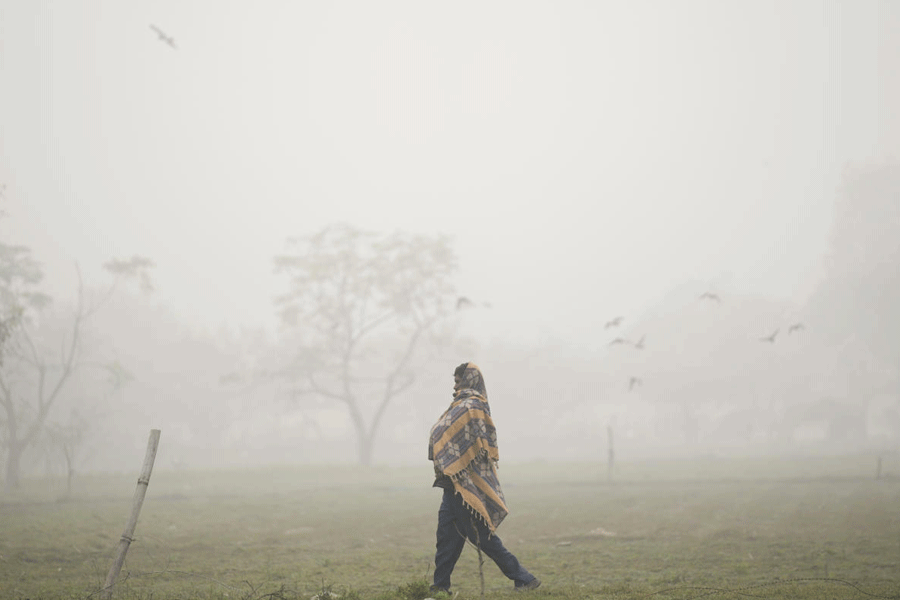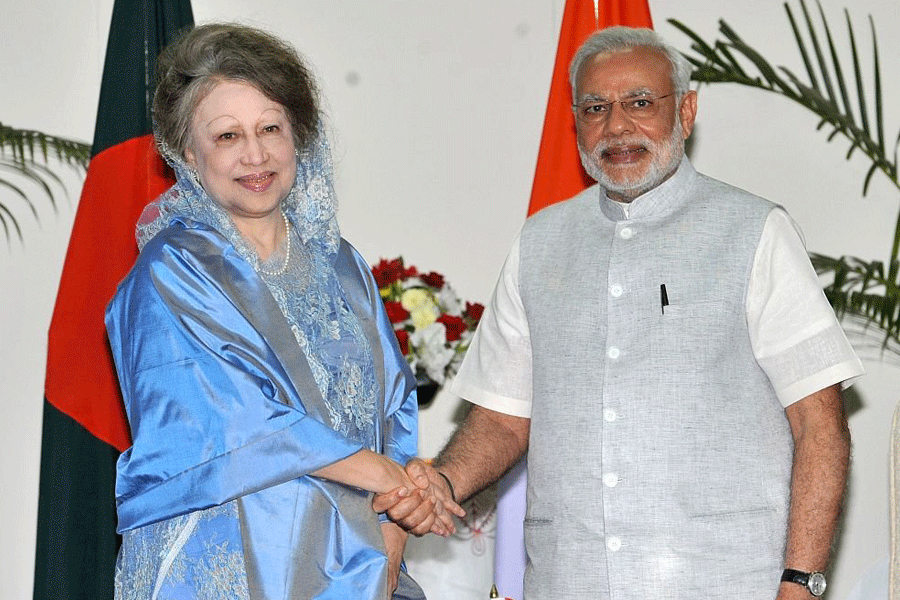
Sarbojanin Puja, Thakurpur, last year. Photographs by Sabyasachi Chatterjee
Bagha Bayen in Satyajit Ray's classic children's film Goopy Gyne, Bagha Byne, was a drummer from the village Hartuki. For those who don't know, he was turned away from his village because he was all passion, no talent.
The dhak is the ritual drum and a cons-tant in a lot of festivals across Bengal. Banschatar village of Murshidabad's Beldanga block, 180 kilometres north of Calcutta, is the home of dhakis; likewise, the neighbouring Andiran village.
Every year, during Durga Puja, Banschatar and Andiran are emptied of its dhakis. Unlike Baghada, they leave for the city where they whip up the festive spirit to a tizzy, showcase their talent and earn something on the side.
Things have been this way for the men of these two villages for generations. Their day jobs follow other rhythms. Some of them pull rickshaws, others work as daily wage labourers or goldsmiths. Beldanga's goldsmiths are known for their deft craftsmanship; earrings and nose rings are their speciality.

Joydeb Das is in his mid-seventies. Even before the introductions are underway, you can tell from his knotty arms and fingers that he too is a dhaki. It's been a few years now that he has not been able to make it to Calcutta during the Pujas, but he does oblige those who contact him from neighbouring villages. He plays at social gatherings and festivals there.
Today, he is teaching his four-year-old grandson, Tomojit, to play the kansor, a musical instrument made of brass. It resembles a plate, which when beaten with a sturdy stick, produces a clanging sound. "A good way to learn any rhythm instrument is to start with the kansor. To work the dhak, one needs a lot of physical strength; little children don't have that kind of strength. But a kansor is easy to handle."

In 1987, Joydeb travelled to what was then known as the USSR as a part of the cultural troupe accompanying the then Prime Minister, Rajiv Gandhi. He played in all the major cities there at the Festival of India. "I remember playing before a huge audience including the then President of the Soviet Union, Mikhail Gorbachev," he says and tears up as he recalls how the Indian PM congratulated him in person for his spirited performance.
The dhak has indeed taken the male members of Banschatar and Andiran places. Joydeb's youngest son, Toton, has been playing professionally for a decade and is already a name in the dhaki circuits of Calcutta. He talks about how playing the dhak is no longer about getting the bol or beat right - the overall presentation has to be appealing.

Toton's talent caught the attention of popular tabla and rhythm maestro, Pandit Mallar Ghosh. Today, he and four other dhakis - all from Banschatar - are key members of Mallar's fusion band titled MGC. He says, "As a team we have been practising different physical moves. Our stage performances have helped us evolve a different dimension to the art of the dhaki.''
Toton's brother-in-law, Khokon Das, who is from Andiran, also plays the dhak but he is better known for his skill with the dhol - another percussion instrument. He travelled to Sweden and Czechoslovakia, recently, to perform.
Beginning with Mahalaya, when most nooks and corners of the state come alive, when the ritual dhak makes the heart race, when man and nature alike seem drunk with happiness, a strange hush falls over Banschatar and Andiran villages. Goodbyes are said and the men leave. The women know better than to complain though. If Durga is pleased with their sacrifice, maybe she will put in a good word with Lakshmi.
The writer has been working closely with dhakis in Calcutta during the Pujas and is managing partner, Creocraft Ventures

